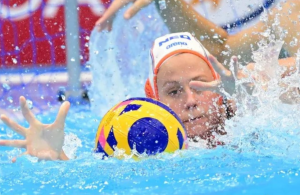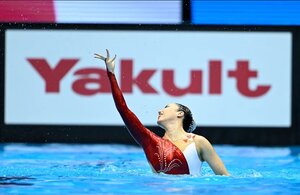- Molly O’Callaghan, a 19-year-old swimmer from Australia, etched her name in the annals of swimming history with a remarkable performance in the Women’s 200m Freestyle event
- Akshay Bhatia, 21, Wins his First PGA Tour Title at the Barracuda Championship
- Bruno Fernandes Replaces Harry Maguire as New Man Utd Captain
- Lionel Messi Surprises Teammate in group chat ahead of Grand Unveiling
- Man Utd Sign Keeper Andre Onana from Inter
Formula 1 Drivers Question Plank Wear Checks
- Updated: October 27, 2023
- 267

Lewis Hamilton and Fellow Formula 1 Drivers Question Effectiveness of Plank Wear Checks
Lewis Hamilton and several fellow Formula 1 drivers have questioned the effectiveness of the sport’s plank wear checks after their experiences at the United States Grand Prix. Hamilton and Ferrari’s Charles Leclerc were disqualified from the race due to excessive plank wear on their cars, a development that raised concerns about the consistency and fairness of the checks.
At the US GP, the skid blocks on Hamilton’s Mercedes were found to have worn too thin, and Leclerc’s Ferrari was also found in breach of the same regulation. The checks that led to their disqualifications were part of the FIA’s long-standing random spot-check policy on specific areas of cars for rules compliance.
This system involves randomly selecting a few cars for post-race scrutineering checks in a bid to ensure that teams comply with the regulations. However, this approach has come under scrutiny following the events in Austin.
Hamilton expressed his concerns to Sky Sports F1 ahead of the Mexico City GP, stating, “Basically, that was the first time we’d had a Sprint race there [in Austin], and they had only tested a few cars, and 50 percent of them got disqualified. There are far more drivers’ cars that were illegal [but weren’t checked].”
The main issue that arose in Austin was excessive plank wear, which occurred due to the introduction of Sprint races. The additional strain on the cars during these events caused the skid blocks to wear more quickly. Plank wear is a part of the car that isn’t considered a performance element, but it plays a role in how cars handle bumps and variations on the track.
While Hamilton accepted the disqualification as a consequence of the worn skid blocks, he raised questions about the fairness of the current system. “I’ve heard from several different sources that there were a lot of other cars that were also illegal, but they weren’t tested so they got away with it,” he said.
He emphasized that there needed to be a better structure to ensure fairness across the board, suggesting that the current system had room for improvement. The British driver, who has been in the sport for 16 years, indicated that some drivers have been fortunate not to be tested while others have faced disqualifications. This disparity highlighted the need for a more consistent and comprehensive approach.
Hamilton’s sentiments were echoed by other drivers. Alex Albon of Williams stated that when one driver in a team is found to be in violation, there’s a high likelihood that their teammate’s car is also non-compliant. Lando Norris of McLaren expressed his desire for more cars to be checked and felt surprised by the disqualifications. He believed that more comprehensive checks would provide better fairness.
Esteban Ocon of Alpine added that while it was less likely for such issues to occur in the regular format, the sprint events raised the chances of plank wear violations. Therefore, he suggested that there might have been cars running afoul of the regulations on other occasions as well.
The Formula 1 governing body, the FIA, has provided some insights into the current system. While it acknowledged that a wide array of checks were conducted in post-race scrutineering, it highlighted the challenges of conducting comprehensive checks on every parameter of every car in a short time frame. The FIA explained that the process of randomly selecting cars for post-race scrutineering across various aspects of the regulations was valuable in uncovering any compliance issues.
The debate surrounding plank wear checks highlights the need for an improved and more consistent system in Formula 1 to ensure fairness and safety. As the sport continues to evolve, adapting the scrutiny process to meet new challenges is crucial to maintain a level playing field and uphold the integrity of the competition. The drivers’ concerns emphasize the importance of striking a balance between rigorous checks and practical feasibility to ensure the integrity of the sport.
For More Related Updates Please Visit Our Official Website
By- Sahiba Suri


















